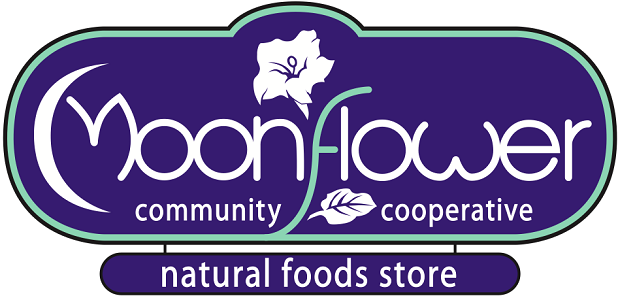On Thursday, October 19th, Emily Stock (founder and owner of Sundial Medicinals) initiated her Fall Herbalism Series at Moonflower with an inspiring class on the philosophy and practice of energetics. Emily’s aimed to describe energetics in a way that conveyed its practicality and tangible applications in our lives, and she certainly succeeded.
Emily described energetics as a way of seeing patterns of nature within bodies, herbs, and foods. Theories of energetics emerged in many different human societies. She referenced the Five Element Theory within Chinese medicine, which relates five elements (wood, fire, earth, metal, and water) to cycles in nature, including human bodies. The concept of Yin and Yang complements the Five Element Theory. Originally, Emily explained, the yin metaphorically represented the shady side of a mountain, while yang represented the sunny side. She emphasized that the dark side (yin) contains a bit of the white side (yang) within it, and yang also contains a small portion of yin, signifying that there is no stark difference between these elements or states. Generally, yin describes things which are dark, heavy, nutritive, cold, moist, passive, hibernatory, and soft, while yang describes things which are warm, hot, aggressive, and active. Within Ayurveda, a medical practice historically rooted in India, energetics manifests in the form of three doshas, including the Vata (related to air), the Pitta (related to fire), and Kapha (related to earth and water).
After giving a brief overview of different energetics theories, Emily delved into a discussion on how to identify the energetics of a person, the energetics of patterns (acute health problems), and the energetics of remedies, including food and herbs. In order to assess the energetics of a person, Emily listed four energetic states: hot, cold, moist, and dry. Hot is associated with excitation, excess, stimulation, redness, acute and sharp pain, swelling, and stress. This may present as concentrated, yellow urine or green and yellow mucus, for example. Cold is associated with depressed body function, paleness, slowness, and dull and consistent pain. During sickness, coldness may present as clear, copious urine and mucus. Moist is associated with congestion and poor elimination, while dryness is associated with tension.
a discussion on how to identify the energetics of a person, the energetics of patterns (acute health problems), and the energetics of remedies, including food and herbs. In order to assess the energetics of a person, Emily listed four energetic states: hot, cold, moist, and dry. Hot is associated with excitation, excess, stimulation, redness, acute and sharp pain, swelling, and stress. This may present as concentrated, yellow urine or green and yellow mucus, for example. Cold is associated with depressed body function, paleness, slowness, and dull and consistent pain. During sickness, coldness may present as clear, copious urine and mucus. Moist is associated with congestion and poor elimination, while dryness is associated with tension.
Hippocrates notably remarked, “Let thy kitchen be thy apothecary; and, let foods be your medicine,” a phrase which has guided herbalists for hundreds of years. Emily recommended utilizing food and herbs which consider your own energetic state. Hot remedies can treat cold ailments, while dry remedies can treat moist ailments, Balancing energetics is essential, as one should try to avoid treating a hot ailment with a hot remedy, though some grey areas do exist. For example, dryness can be remedied by maintaining a balance of water intake, using olive and coconut oils when preparing foods, and consuming mucilaginous foods, including chia seeds, flax seed, marshmallow root, and slippery elm. Filtering chlorine from water can also prevent the effects of dryness. Raw foods, especially tofu and melons,are cold foods, while ginger and various peppers are hot foods. Most herbs, Emily noted, are cooling and drying while very few are moistening.
While certain exceptions and grey areas exist within the realm of energetics, following these general principles in line with ancient Chinese medicine and Ayurveda can help us all find a little more balance in our lives.
